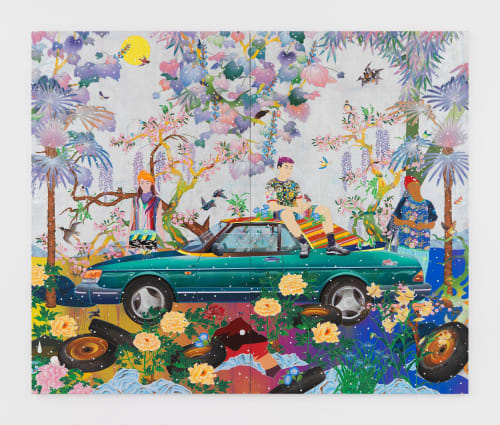Born in Takayama in 1976, raised between Japan and California, and currently based in Greenpoint, New York, Tomokazu Matsuyama has made his diasporic identity the driving force of a borderless creative output.
Merging elements from Eastern and Western art traditions, Tomokazu’s oeuvre perfectly epitomizes the cultural hybridity of our societies that challenges notions of national and individual identities, while reflecting the artist’s personal trajectory as a citizen of the world.
On display at Almine Rech, London, until 20 May, his richly detailed paintings and elaborate sculptures draw on a wide and diverse range of sources – from Pop Art, graffiti and the work of British designer William Morris, to Meiji-era prints, Edo-period art and the Kanō School.
With their compositional arrangement inspired by the pastoral genre and Grand Manner portraiture, Tomokazu’s paintings retain a distinctive graphic quality that flawlessly harmonize with their use of skewed perspective and absence of shading borrowed from traditional Japanese woodblock prints.
As with the paintings, Matsuyama’s hyper-coloured, eye-popping sculptures encompass a variety of different inspirations – from textile patterns to fashion magazines and manga comics – while offering a plastic visualisation of the artist’s own eclectic approach to art-making.
1883 Arts Editor sat down for a chat with Tomokazu Matsuyama to discuss his work, influences and future endeavours.


